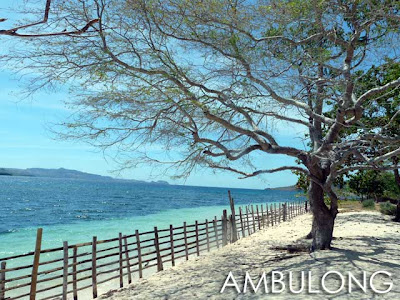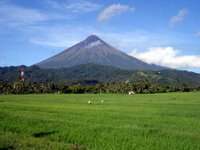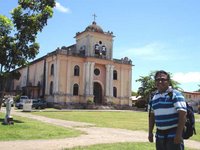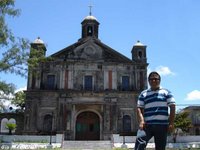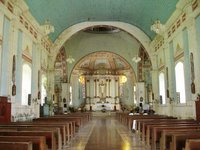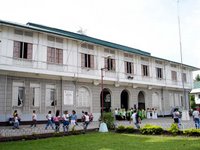 Batangas
Batangas is a great place for
visita iglesia and a heritage tour. I had the chance to visit many of the churches of Batangas when I drove from Calatagan, Batangas to Quezon Province.
My starting point was the
Cabo de Punta Santiago lighthouse in Calatagan which unfortunately, according to heritage advocates in Calatagan, lost a lot of its antique wood and bronze details while under the care of a local political family. I wonder if the items are now in their house. The facade has also been plastered with cement.
The Philippine Coast Guard suspended its
Adopt a Lighthouse Program because of the Calatagan incident since it realized that it made a mistake in the program policy by disregarding the heritage conservation aspect. Anyway, I'll update everyone on the developments. The Philippine Coast Guard is evaluating the situation.

The first heritage church after Calatagan is the
Balayan Church, a
National Cultural Treasure. Although many other Batangas churches have better interiors, I think the NCCA has reasons for selecting this church. According to the NCCA,
"It must be noted that by the 19th century, the seculars were already largely indio priests, hence, Balayan is one of a few examples of churches built under direction of the indio clergy. The interior has not changed much since the 1870s when a print showing the church interior was made, despite several superficial additions."
This church also figured in the national spotlight when a
McDonald's was built on its grounds some time in 2002, thus covering the view of part of the convent. It sparked a lot of protests from the heritage community and concerned townsfolk. But there's no stopping Roman Catholic Church, Inc.

Balayan town itself has a lot of wonderful ancestral houses. I wonder why the National Historical Institute has not declared the town or at least its houses. It would have been nice if I had more time to appreciate the town, but I had to rush.
 Calaca Church
Calaca Church, in the next town, is also worth a visit. Plus it also has a number of noteworthy
bahay na bato or old stone houses.


Nothing much left in Lemery. But its neighbor, the
heritage town of Taal, a
National Historical Landmark, is a treasure trove of heritage. Check out the
Taal Basilica, also a
National Historical Landmark, and the
Caysasay Church. Don't forget to visit the
ruins of Sta. Lucia, an older church where a well, said to have miraculous waters, could be found.

Taal actually has a good number of declared structures including the
Leon Apacible Historical Landmark and
Marcela Agoncillo Historical Landmark. If you do have time, make sure you explore the town to see its many ancestral houses. The town is also known for its
barong cloth embroidery, especially the
pina cloth. When I visit Taal, I always buy
barong cloth.

Along the National Highway, you'll pass by the many
balisong knife shops which Batangas is very famous for. And keep your eye open for the
Taal longganisa stalls as well. I remember seeing them at the junction to Sta. Teresita town.


After Taal, there's
San Jose Church,
Ibaan Church and the
Batangas Basilica. I got to pass by the San Jose Church which was on the way, as well as the Ibaan Church. But I skipped the Batangas Basilica to avoid traffic since I was rushing to Quezon.


At the end of the road, before you reach the towns of Quezon, is the
San Juan Church. Just like in Balayan and Taal, the
old houses in San Juan are also superb, many built during the early American colonial period when Art Deco was in fashion.
But San Juan is out of the way if you plan to go back to Manila. So unless you have a lot of time to spare, you might have to skip San Juan and visit the
Lipa Cathedral and
Carmel Church in Lipa instead. But if you are on the way to Quezon, it's definitely a must stop. The churches of Quezon is another story.
Related entries
Visita iglesia to our heritage churches
Holy Week practices in the Philippines
Visita iglesia and more Holy Week practices in the Philippines
Visita iglesia routes for Holy Thursday



